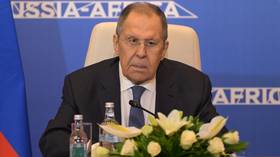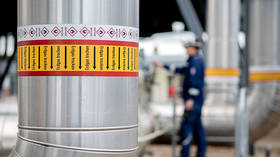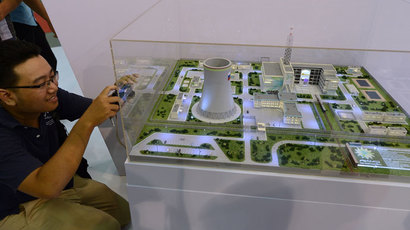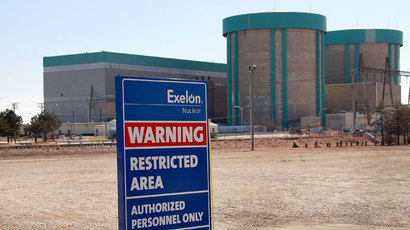Japan prepares to ship nuclear materials to the US

Japan agreed to transfer a share of its highly enriched uranium and weapons grade plutonium stockpiles to the US as part of the global effort to secure nuclear materials. Other nations are also urged to deposit excess nuclear materials in the US.
On the eve of the two-day Nuclear Security Summit in The Hague, US and Japanese leaders arranged a deal on “final disposition” in the US of well over 300 kilograms of weapons grade plutonium and an unspecified quantity of highly enriched uranium (HEU) that will be “sent to a secure facility and fully converted into less sensitive forms."
This quantity of plutonium is enough to produce 40-50 warheads. The total quantity of HEU currently stocked in Japan is estimated at approximately 1.2 tons. According to The New York Times, some 200 kilograms of HEU is currently designated for the US.
After Barack Obama announced in Prague in 2009 an ambitious agenda to seek “the peace and security of a world without nuclear weapons,” the American president has been pressing his foreign counterparts, both in Asia and Europe, demanding they either get rid of their excess nuclear materials via the US, or tighten security of stockpiles at home.
Two more countries, Belgium and Italy, have also agreed to hand over excess nuclear materials to the US and issued separate joint statements with the White House, Reuters reported.
“This effort involves the elimination of hundreds of kilograms of nuclear material, furthering our mutual goal of minimizing stocks of HEU and separated plutonium worldwide, which will help prevent unauthorized actors, criminals, or terrorists from acquiring such materials,” US President Barack Obama and Japanese Prime Minister Shinzo Abe said in a joint statement released by the White House on Monday.
There is no information whether the deal between Japan and the US has a financial side; nuclear materials, of course, have a solid market value.
After the Russian-American HEU-LEU agreement came to an end in 2013, the US nuclear power generation industry is likely to face a sharp fuel price surge and shortage.
For two decades, the US was buying nuclear fuel from Russia for a dumping price. This fuel was made from down blended Soviet military grade highly enriched uranium, which constituted up to 40 percent of nuclear fuel for America’s 104 nuclear reactors (America’s 65 nuclear power plants generate over 19 percent of electric power in the country).
In the meantime, the United States Enrichment Corporation (USEC), the leading US nuclear fuel supplier remains in dire straits and plans to voluntarily file for bankruptcy in the first quarter of 2014 in order to restructure.
The US also has problems with producing plutonium, used not only in nuclear warheads, but for space exploration as well; only plutonium can produce enough power for long missions to distant planets in the Solar system.
Tokyo also reportedly possesses several dozen tons of plutonium-uranium hybrid fuel called MOX, which it intends to burn in 16 reactors the country plans to restart. All Japanese nuclear power generating facilities halted operation following the Fukushima nuclear catastrophe in March 2011.
The nuclear materials designated for transfer to the US have been kept for decades at Japan’s research reactor site in Tokaimura, where it was used for research.
During the Cold War era, the US and UK reportedly handed over some 331 kilogram of plutonium to Japan to be used for developing breeder reactor technology.
After decades of research, practically all fast (breeder) reactor projects around the world, including Japanese ones, are now closed down. The only country that currently possesses operating breeder reactor power generation facility is Russia.
In 1999, the Tokaimura facility witnessed an accident involving a highly enriched uranium solution. Two workers mishandled radioactive fluid and died as a result, while over 300 were exposed to high doses of radiation.
The New York Times maintains that while the nuclear materials at the Tokaimura facility are of American and British origin, Japan also has vast stockpiles, up to nine tons of plutonium, created at the country’s nuclear power stations as a byproduct of burning uranium for electric power generation. Once Japan restarts some of its nuclear reactors, there will be even more plutonium generated.














